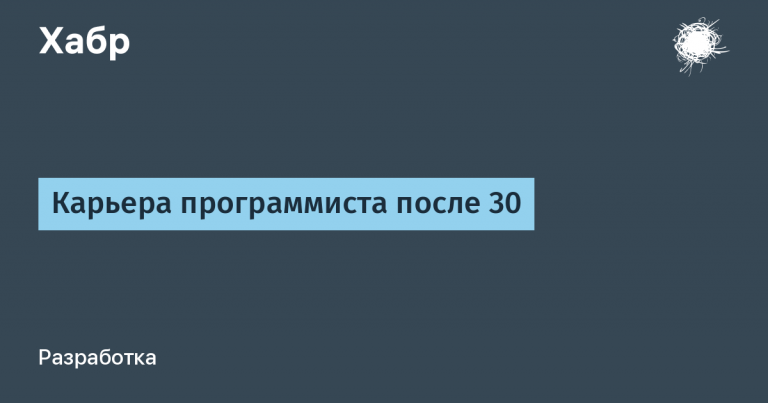building a web server
Foreword
It so happened that I have to work on a large number of sites, the tasks to solve are also different – from server settings to “make up a form”. And on one of the projects, a task arose – to upgrade to the current version of php (8.1 at the time of writing), upgrade to the current version of CMS (1C Bitrix), and, in general, “bring it to mind”.
Since the project has acquired a significant amount of functionality that is not directly related to the site (incremental and full scheduled backups with uploading to the cloud, compilation of dictionaries, synchronization with different providers), and work is carried out in 3 environments (locally, a test site and a production site), then I decided that this would be a good opportunity to move the entire infrastructure to Docker containers.
Since the technology is already established, it was expected that there would be a ready-made server template “out of the box” that would suit our needs. But having searched, it was not possible to find a complete solution – everywhere there were some nuances, because of which the solution did not fit. As a result, our own server was assembled for the site on 1C Bitrix. After that, everything related to this CMS was cut from the server and now it can be used for other projects without restrictions.
The code is available at github.
Server Components
For the full operation of the server, we need the following components:
database (MySQL);
PHP
NGINX;
proxy for sending mail (msmtp);
composer;
letsencrypt certificates;
backup and recovery;
optionally – a cloud for storing backups.
We also need to schedule different actions to run. For this, crontab will be used on hostand not in containers.
Before starting work
On the server, we need docker-compose. Instructions:
We will also need access to the smtp mail service and s3 storage for backups (optional).
About gmail smtp
Google informed, which from June 2022 suspends access to insecure applications (with authorization only by account password). To be able to use gmail smtp, you need to enable two-factor authentication in your account settings, create a separate authorization password for our site and use it. Detailed instructions are sufficient.
Services and environments
For flexibility in setting up the server, we create 4 separate compose.yml files:
compose-app.yml – the main services of our application (database, php, nginx, composer);
compose-https.yml – for site operation via https protocol. Includes certbot, as well as http to https redirect rules for nginx;
compose-cloud.yml – for storing backups in cold storage;
compose-production.yml – overrides restart rules for all containers.
compose-app.yml
version: '3'
services:
db:
image: mysql
container_name: database
restart: unless-stopped
tty: true
environment:
MYSQL_DATABASE: ${DB_DATABASE}
MYSQL_ROOT_PASSWORD: ${DB_ROOT_PASSWORD}
MYSQL_USER: ${DB_USER}
MYSQL_PASSWORD: ${DB_USER_PASSWORD}
volumes:
- ./.backups:/var/www/.backups
- ./.docker/mysql/my.cnf:/etc/mysql/my.cnf
- database:/var/lib/mysql
networks:
- backend
app:
image: php:8.1-fpm
container_name: application
build:
context: .
dockerfile: Dockerfile
args:
GID: ${SYSTEM_GROUP_ID}
UID: ${SYSTEM_USER_ID}
SMTP_HOST: ${MAIL_SMTP_HOST}
SMTP_PORT: ${MAIL_SMTP_PORT}
SMTP_EMAIL: ${MAIL_SMTP_USER}
SMTP_PASSWORD: ${MAIL_SMTP_PASSWORD}
restart: unless-stopped
tty: true
working_dir: /var/www/app
volumes:
- ./app:/var/www/app
- ./log:/var/www/log
- ./.docker/php/local.ini:/usr/local/etc/php/conf.d/local.ini
networks:
- backend
links:
- "webserver:${APP_NAME}"
composer:
build:
context: .
image: composer
container_name: composer
working_dir: /var/www/app
command: "composer install"
restart: "no"
depends_on:
- app
volumes:
- ./app:/var/www/app
webserver:
image: nginx:stable-alpine
container_name: webserver
restart: unless-stopped
tty: true
ports:
- "80:80"
- "443:443"
volumes:
- ./app/public:/var/www/app/public
- ./log:/var/www/log
- ./.docker/nginx/default.conf:/etc/nginx/includes/default.conf
- ./.docker/nginx/templates/http.conf.template:/etc/nginx/templates/website.conf.template
environment:
- APP_NAME=${APP_NAME}
networks:
- frontend
- backend
networks:
frontend:
driver: bridge
backend:
driver: bridge
volumes:
database:
compose-https.yml
version: '3'
services:
webserver:
volumes:
- ./.docker/certbot/conf:/etc/letsencrypt
- ./.docker/certbot/www:/var/www/.docker/certbot/www
- ./.docker/nginx/templates/https.conf.template:/etc/nginx/templates/website.conf.template
certbot:
image: certbot/certbot
container_name: certbot
restart: "no"
volumes:
- ./log/letsencrypt:/var/www/log/letsencrypt
- ./.docker/certbot/conf:/etc/letsencrypt
- ./.docker/certbot/www:/var/www/.docker/certbot/www
compose-cloud.yml
version: '3'
services:
cloudStorage:
image: efrecon/s3fs
container_name: cloudStorage
restart: unless-stopped
cap_add:
- SYS_ADMIN
security_opt:
- 'apparmor:unconfined'
devices:
- /dev/fuse
environment:
AWS_S3_BUCKET: ${AWS_S3_BUCKET}
AWS_S3_ACCESS_KEY_ID: ${AWS_S3_ACCESS_KEY_ID}
AWS_S3_SECRET_ACCESS_KEY: ${AWS_S3_SECRET_ACCESS_KEY}
AWS_S3_URL: ${AWS_S3_URL}
AWS_S3_MOUNT: '/opt/s3fs/bucket'
S3FS_ARGS: -o use_path_request_style
GID: ${SYSTEM_GROUP_ID}
UID: ${SYSTEM_USER_ID}
volumes:
- ${AWS_S3_LOCAL_MOUNT_POINT}:/opt/s3fs/bucket:rshared
compose-production.yml
version: '3'
services:
db:
restart: always
app:
restart: always
webserver:
restart: always
cloudStorage:
restart: alwaysAnd define the environment settings in the file .env
.env
COMPOSE_FILE=compose-app.yml:compose-cloud.yml:compose-https.yml:compose-production.yml
SYSTEM_GROUP_ID=1000
SYSTEM_USER_ID=1000
APP_NAME=example.local
ADMINISTRATOR_EMAIL=example@gmail.com
DB_HOST=db
DB_DATABASE=example_db
DB_USER=example
DB_USER_PASSWORD=example
DB_ROOT_PASSWORD=example
AWS_S3_URL=http://storage.example.net
AWS_S3_BUCKET=storage
AWS_S3_ACCESS_KEY_ID=#YOU_KEY#
AWS_S3_SECRET_ACCESS_KEY=#YOU_KEY_SECRET#
AWS_S3_LOCAL_MOUNT_POINT=/mnt/s3backups
MAIL_SMTP_HOST=smtp.gmail.com
MAIL_SMTP_PORT=587
MAIL_SMTP_USER=example@gmail.com
MAIL_SMTP_PASSWORD=example
Depending on what set of services we need in a particular environment, we specify in the variable COMPOSE_FILE set of compose-*.yml files
In catalog .docker/ we store settings for all services that are used in the application. There are 2 worth noting here:
For nginx we use a rules file .docker/nginx/default.conf and two patterns (.docker/nginx/templates/http.conf.template and .docker/nginx/templates/https.conf.template). Depending on which protocol we are working on, the appropriate nginx settings will be used. Templates are detailed on the image page. nginx;
For msmtp in a file .docker/msmtp/msmtp we specify patches of the form #PASSWORD#which will be replaced when the image is built.
.docker/msmtp/msmtprc
# Set default values for all following accounts.
defaults
auth on
tls on
logfile /var/www/log/msmtp/msmtp.log
timeout 5
account docker
host #HOST#
port #PORT#
from #EMAIL#
user #EMAIL#
password #PASSWORD#
# Set a default account
account default : docker
Create a file Dockerfilein which we indicate the features of the assembly and, as mentioned earlier, for msmtp we set connection parameters from environment variables:
Dockerfile
FROM php:8.1-fpm
ARG GID
ARG UID
ARG SMTP_HOST
ARG SMTP_PORT
ARG SMTP_EMAIL
ARG SMTP_PASSWORD
USER root
WORKDIR /var/www
RUN apt-get update -y \
&& apt-get autoremove -y \
&& apt-get -y --no-install-recommends \
msmtp \
zip \
unzip \
&& rm -rf /var/lib/apt/lists/*
COPY ./.docker/msmtp/msmtprc /etc/msmtprc
RUN sed -i "s/#HOST#/$SMTP_HOST/" /etc/msmtprc \
&& sed -i "s/#PORT#/$SMTP_PORT/" /etc/msmtprc \
&& sed -i "s/#EMAIL#/$SMTP_EMAIL/" /etc/msmtprc \
&& sed -i "s/#PASSWORD#/$SMTP_PASSWORD/" /etc/msmtprc
COPY --from=composer /usr/bin/composer /usr/bin/composer
RUN getent group www || groupadd -g $GID www \
&& getent passwd $UID || useradd -u $UID -m -s /bin/bash -g www www
USER www
EXPOSE 9000
CMD ["php-fpm"]
Backup
The backup consists of two parts: an archive with files and a database dump. We can store them locally or send them to the cloud. We use a script to generate cgi-bin/create-backup.sh.
Recovery – cgi-bin/restore-backup.sh respectively. If we have a cloud storage connected, then we will offer to restore from it:
create-backup.sh
#!/bin/bash
BASEDIR=$(cd "$(dirname "${BASH_SOURCE[0]}")/../" &> /dev/null && pwd)
source "$BASEDIR/.env"
cd "$BASEDIR/"
# If run script with --local, then don't send backup to remote storage
moveToCloud="Y"
while [ $# -gt 0 ] ; do
case $1 in
--local) moveToCloud="N";;
esac
shift
done
# If backups storage is not mounted, then anyway store backups local
if ! [[ $COMPOSE_FILE == *"compose-cloud.yml"* ]]; then
moveToCloud="N"
fi
# Current date, 2022-01-25_16-10
timestamp=`date +"%Y-%m-%d_%H-%M"`
backups_local_folder="$BASEDIR/.backups/local"
backups_cloud_folder="$AWS_S3_LOCAL_MOUNT_POINT"
# Creating local folder for backups
mkdir -p "$backups_local_folder"
# Creating backup of application
tar \
--exclude="vendor" \
-czvf $backups_local_folder/"$timestamp"_app.tar.gz \
-C $BASEDIR "app"
# Creating backup of database
docker exec database sh -c "exec mysqldump -u root -h $DB_HOST -p$DB_ROOT_PASSWORD $DB_DATABASE" > $backups_local_folder/"$timestamp"_database.sql
gzip $backups_local_folder/"$timestamp"_database.sql
# If required, then move current backup to cloud storage
if [ $moveToCloud == "Y" ]; then
mv $backups_local_folder/"$timestamp"_database.sql.gz $backups_cloud_folder/"$timestamp"_database.sql.gz
mv $backups_local_folder/"$timestamp"_app.tar.gz $backups_cloud_folder/"$timestamp"_app.tar.gz
fi
# If we already moved backup to cloud, then remove old backups (older than 30 days) from cloud storage
if [ $moveToCloud == "Y" ]; then
/usr/bin/find $backups_cloud_folder/ -type f -mtime +30 -exec rm {} \;
fi
restore-backup.sh
#!/bin/bash
BASEDIR=$(cd "$(dirname "${BASH_SOURCE[0]}")/../" &> /dev/null && pwd)
source "$BASEDIR/.env"
cd "$BASEDIR/"
backupsDestination="$BASEDIR/.backups/local"
# If backups storage is mounted, ask, from where will restore backups
if [[ $COMPOSE_FILE == *"compose-cloud.yml"* ]]; then
while true
do
reset
echo "Select backups destination:"
echo "1. Local;"
echo "2. Cloud;"
echo "---------"
echo "0. Exit"
read -r choice
case $choice in
"0")
exit
;;
"1")
break
;;
"2")
backupsDestination="$AWS_S3_LOCAL_MOUNT_POINT"
break
;;
*)
;;
esac
done
fi
reset
# Select backup for restore
echo "Available backups:"
find "$backupsDestination"/*.gz -printf "%f\n"
echo "------------"
echo "Enter backup path:"
read -i "$backupsDestination"/ -e backup_name
if ! [ -f "$backup_name" ]; then
echo "Wrong backup path."
exit 1
fi
backup_mode="unknown"
if [[ $backup_name == *"app.tar.gz"* ]]; then
backup_mode="app"
elif [[ $backup_name == *"database.sql.gz"* ]]; then
backup_mode="database"
fi
if [ $backup_mode == "unknown" ]; then
echo "Unknown backup type"
exit 1
fi
reset
if [ $backup_mode == "app" ]; then
mkdir -p "$BASEDIR"/.backups/tmp
cp "$backup_name" "$BASEDIR"/.backups/tmp/app_tmp.tar.gz
tar -xvf "$BASEDIR"/.backups/tmp/app_tmp.tar.gz -C "$BASEDIR"
rm -rf "$BASEDIR"/.backups/tmp
fi
if [ $backup_mode == "database" ]; then
mkdir -p "$BASEDIR"/.backups/tmp
cp "$backup_name" "$BASEDIR"/.backups/tmp/database_tmp.sql.gz
gunzip "$BASEDIR"/.backups/tmp/database_tmp.sql.gz
if ! [ -f "$BASEDIR"/.backups/tmp/database_tmp.sql ]; then
echo "Error in database unpack process"
exit 1
fi
docker-compose exec db bash -c "exec mysql -u root -p$DB_ROOT_PASSWORD $DB_DATABASE < /var/www/.backups/tmp/database_tmp.sql"
rm -rf "$BASEDIR"/.backups/tmp
fi
Crontab
Scheduled launch is done on the host side. The file is used for initialization. cgi-bin/prepare-crontab.sh. During execution, the script collects all files from the directory .crontabreplaces the path to the application in them #APP_PATH# to the current one, and adds them to the crontab on the host.
prepare-crontab.sh
#!/bin/bash
BASEDIR=$(cd "$(dirname "${BASH_SOURCE[0]}")/../" &> /dev/null && pwd)
# Load environment variables
source "$BASEDIR"/.env
# Create temporary directory
mkdir -p "$BASEDIR"/.crontab_tmp/
# Copy all crontab files to temporary directory
cp "$BASEDIR"/.crontab/* "$BASEDIR"/.crontab_tmp/
# Set actual app path in crontab files
find "$BASEDIR"/.crontab_tmp/ -name "*.cron" -exec sed -i "s|#APP_PATH#|$BASEDIR|g" {} +
# Set crontab
if [[ $COMPOSE_FILE == *"compose-https.yml"* ]]; then
find "$BASEDIR"/.crontab_tmp/ -name '*.cron' -exec cat {} \; | crontab -
else
find "$BASEDIR"/.crontab_tmp/ -name '*.cron' -not -name 'certbot-renew.cron' -exec cat {} \; | crontab -
fi
# Remove temporary directory
rm -rf "$BASEDIR"/.crontab_tmp/
Certbot
If https is not needed within this environment, then we skip this step.
We use certbot to get ssl certificates. But there is one feature here – to confirm ownership of the domain, we need to start nginx, but it will not start without certificates. It turns out a vicious circle. We use a script to solve cgi-bin/prepare-certbot.shwhich creates stub certificates, starts nginx, requests up-to-date certificates, installs them, and restarts nginx.
To update the certificates, create a file cgi-bin/certbot-renew.shwhich we will launch according to the schedule.
prepare-certbot.sh
#!/bin/bash
BASEDIR=$(cd "$(dirname "${BASH_SOURCE[0]}")/../" &> /dev/null && pwd)
source "$BASEDIR/.env"
cd "$BASEDIR/"
if ! [ -x "$(command -v docker-compose)" ]; then
echo 'Error: docker-compose is not installed.' >&2
exit 1
fi
domains=($APP_NAME www.$APP_NAME)
rsa_key_size=4096
data_path="$BASEDIR/.docker/certbot"
email=$ADMINISTRATOR_EMAIL
staging=0 # Set to 1 if you're testing your setup to avoid hitting request limits
if [ -d "$data_path" ]; then
read -p "Existing data found for $domains. Continue and replace existing certificate? (y/N) " decision
if [ "$decision" != "Y" ] && [ "$decision" != "y" ]; then
exit
fi
fi
if [ ! -e "$data_path/conf/options-ssl-nginx.conf" ] || [ ! -e "$data_path/conf/ssl-dhparams.pem" ]; then
echo "### Downloading recommended TLS parameters ..."
mkdir -p "$data_path/conf"
curl -s https://raw.githubusercontent.com/certbot/certbot/master/certbot-nginx/certbot_nginx/_internal/tls_configs/options-ssl-nginx.conf > "$data_path/conf/options-ssl-nginx.conf"
curl -s https://raw.githubusercontent.com/certbot/certbot/master/certbot/certbot/ssl-dhparams.pem > "$data_path/conf/ssl-dhparams.pem"
echo
fi
echo "### Creating dummy certificate for $domains ..."
path="/etc/letsencrypt/live/$domains"
mkdir -p "$data_path/conf/live/$domains"
docker-compose run --rm --entrypoint "\
openssl req -x509 -nodes -newkey rsa:$rsa_key_size -days 1\
-keyout '$path/privkey.pem' \
-out '$path/fullchain.pem' \
-subj '/CN=localhost'" certbot
echo
echo "### Starting nginx ..."
docker-compose up --force-recreate -d webserver
echo
echo "### Deleting dummy certificate for $domains ..."
docker-compose run --rm --entrypoint "\
rm -Rf /etc/letsencrypt/live/$domains && \
rm -Rf /etc/letsencrypt/archive/$domains && \
rm -Rf /etc/letsencrypt/renewal/$domains.conf" certbot
echo
echo "### Requesting Let's Encrypt certificate for $domains ..."
domain_args=""
for domain in "${domains[@]}"; do
domain_args="$domain_args -d $domain"
done
case "$email" in
"") email_arg="--register-unsafely-without-email" ;;
*) email_arg="--email $email" ;;
esac
if [ $staging != "0" ]; then staging_arg="--staging"; fi
docker-compose run --rm --entrypoint "\
certbot certonly --webroot -w /var/www/.docker/certbot/www \
$staging_arg \
$email_arg \
$domain_args \
--rsa-key-size $rsa_key_size \
--agree-tos \
--force-renewal" certbot
echo
echo "### Reloading nginx ..."
docker-compose exec webserver nginx -s reload
certbot-renew.sh
#!/bin/bash
BASEDIR=$(cd "$(dirname "${BASH_SOURCE[0]}")/../" &> /dev/null && pwd)
cd "$BASEDIR/"
docker-compose run --rm certbot renew && ocker-compose kill -s SIGHUP webserver
docker system prune -af
At this stage, the site is available and you can continue working with it.
A step-by-step installation process and a description of the variables are available at github.




